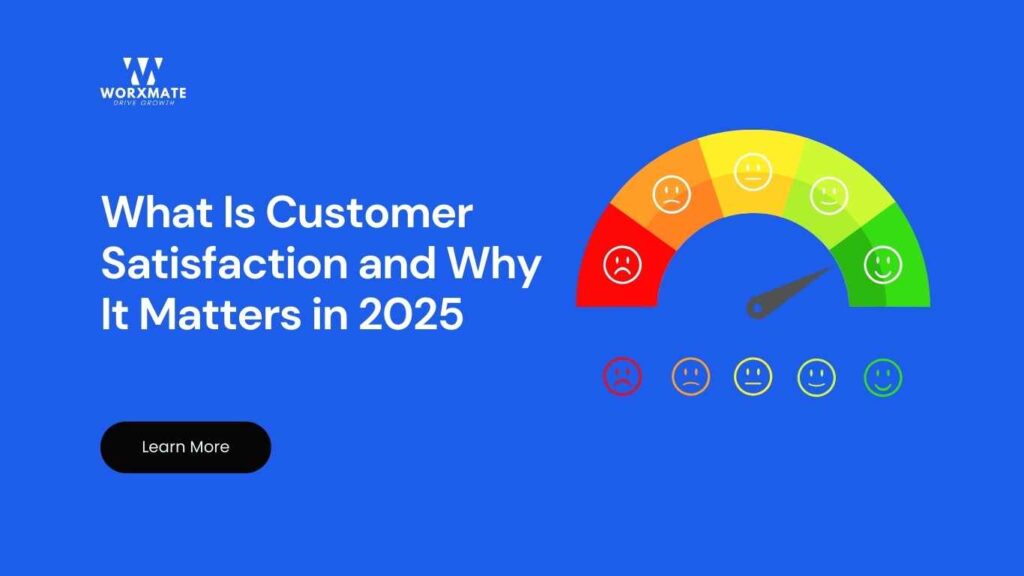Customer satisfaction serves as the cornerstone of business success in today’s competitive marketplace. Understanding how customers perceive your products and services directly impacts retention rates, brand loyalty, and ultimately, your bottom line.
Organizations that prioritize customer satisfaction gain a significant competitive advantage by fostering long-term relationships that translate into sustained growth and profitability.
This comprehensive guide explores the multifaceted concept of customer satisfaction, providing actionable insights on measurement methods, improvement strategies, and real-world success stories that demonstrate its transformative power.
What is Customer Satisfaction?
Customer satisfaction represents the degree to which a product or service meets or exceeds customer expectations. It’s a subjective measure that captures how customers feel about their interactions with a business across various touchpoints in the customer journey.
Unlike other business metrics that may focus solely on quantitative data, customer satisfaction delves into the emotional and experiential aspects of the customer relationship.
At its core, customer satisfaction emerges when the perceived value or experience matches or surpasses what customers anticipated. This alignment between expectations and delivery creates positive sentiment that influences future purchasing decisions and brand advocacy.
Companies that consistently deliver satisfaction benefit from a virtuous cycle where positive experiences lead to increased loyalty, word-of-mouth referrals, and ultimately, business growth.
Components of Customer Satisfaction
Customer satisfaction comprises several interrelated elements that collectively shape the overall customer experience:
- Product quality – The degree to which products meet functional requirements and deliver promised benefits
- Service delivery – How effectively and efficiently services are provided across all customer interactions
- Value perception – The customer’s assessment of benefits received relative to costs incurred
- Problem resolution – The speed and effectiveness with which issues are addressed and resolved
- Emotional connection – The feelings and attitudes customers develop toward the brand through their experiences
Why is Customer Satisfaction Important?
Customer satisfaction transcends being merely a feel-good metric; it represents a critical business driver with far-reaching implications for organizational success. When customers feel satisfied with their experiences, they demonstrate behaviors that directly enhance business performance and competitive positioning.
Business Impact of Customer Satisfaction
High levels of satisfaction correlate strongly with several key business outcomes, positively influencing both short-term goals—like productivity and customer retention—and long-term goals such as brand loyalty and sustainable growth.
- Increased Customer Loyalty: Satisfied customers show a 60–70% higher probability of repurchasing and typically spend 67% more than new customers. This loyalty reduces acquisition costs and stabilizes revenue streams.
- Enhanced Brand Reputation: Positive experiences create a ripple effect through word-of-mouth referrals, with research showing that satisfied customers tell an average of 9 people about their experiences.
- Improved Financial Performance: Organizations with strong satisfaction metrics consistently outperform competitors in stock market returns and profitability.
- Reduced Customer Churn: Companies can increase profits by 25–95% by reducing defection rates by just 5%, highlighting the importance of retaining happy customers.
Competitive Advantage Through Satisfaction
In markets where products and services increasingly resemble commodities, customer satisfaction provides a powerful differentiation strategy. The experience surrounding the product often carries more weight than the product itself in driving purchasing decisions and loyalty. This reality transforms satisfaction into a strategic asset that competitors cannot easily replicate or discount.
How to Measure Customer Satisfaction
Effectively gauging customer satisfaction requires implementing structured measurement approaches that capture meaningful data while providing actionable insights. The most successful measurement strategies employ multiple methodologies to develop a comprehensive understanding of customer perceptions.
Key Customer Satisfaction Metrics
Several established metrics have emerged as industry standards for quantifying customer satisfaction:
- Customer Satisfaction Score (CSAT): This straightforward metric asks customers to rate their satisfaction with a specific interaction or product on a defined scale (typically 1-5 or 1-10).
- Net Promoter Score (NPS): This metric measures customer loyalty by asking customers how likely they are to recommend your company to others on a scale of 0-10, categorizing respondents as Promoters (9-10), Passives (7-8), or Detractors (0-6).
- Customer Effort Score (CES): This measures how much effort customers must expend to get issues resolved or complete transactions, with lower effort correlating to higher satisfaction.
- Customer Loyalty Index (CLI): This composite metric combines repurchase likelihood, upselling receptiveness, and recommendation probability into a single indicator of overall loyalty.
How to Calculate Customer Satisfaction Score
The Score represents one of the most widely implemented metrics due to its simplicity and flexibility. To calculate CSAT:
- Gather responses to satisfaction questions using a defined scale (e.g., 1-5)
- Count the number of positive responses (typically 4 and 5 on a 5-point scale)
- Divide this number by the total number of responses
- Multiply by 100 to get a percentage
The formula can be expressed as:
CSAT = (Number of positive responses ÷ Total number of responses) × 100
This calculation yields a percentage that indicates what proportion of customers report satisfaction with the measured experience or product.
✅ Example:
If 80 out of 100 customers rated their experience as positive, your CSAT score would be:
(80 ÷ 100) × 100 = 80%
Case Studies in Customer Satisfaction Excellence
Examining real-world examples provides valuable insights into effective strategies and their measurable business impacts.
JetBlue: Social Media Response Excellence
JetBlue has established itself as a leader in leveraging social media to enhance the customer experience. During a major winter storm in January 2017 that forced numerous flight cancellations, JetBlue demonstrated exemplary service by continuously updating passengers through Twitter with real-time information about the storm and flight schedules.
What makes this case particularly instructive is how JetBlue transformed a negative situation beyond their control (weather conditions) into a positive experience through transparent communication.
Passengers reported feeling informed and valued, even amid disruptions—an approach that has played a key role in building JetBlue’s strong reputation for customer loyalty and service excellence.
Zappos: Extraordinary Service Delivery
Zappos has built its entire business model around exceptional customer satisfaction, often going beyond conventional service expectations.
The company empowers service representatives to take whatever actions necessary to satisfy customers without requiring management approval.
In one widely-cited example, a Zappos customer service representative spent over 10 hours on a single customer call—a duration that would trigger performance concerns at most companies but exemplifies Zappos’ commitment to satisfaction above efficiency metrics.
This philosophy has generated tremendous brand loyalty, with 75% of purchases coming from returning customers, demonstrating the direct revenue impact of prioritizing satisfaction.
How to Improve Customer Satisfaction
Enhancing customer satisfaction requires a systematic approach that addresses multiple dimensions of the customer experience.
Organizations that excel in this area implement strategies that span operational, emotional, and relational aspects of customer interactions.
Strategic Approaches for Satisfaction Enhancement
- Develop a Customer-Centric Culture: Foster an organizational mindset that prioritizes customer needs in all decision-making processes and reinforces this through recognition programs that celebrate exceptional customer service.
- Personalize Customer Interactions: Leverage customer data to deliver tailored experiences that demonstrate understanding of individual preferences and needs, leading to stronger emotional connections with the brand.
- Streamline Customer Journeys: Identify and eliminate friction points across all touchpoints to reduce customer effort and enhance satisfaction through smoother interactions.
- Implement Closed-Loop Feedback Systems: Establish processes that ensure customer feedback triggers appropriate responses and follow-up actions, demonstrating that customer input drives actual improvements.
Technology-Enabled Satisfaction Improvement
Modern technology solutions provide powerful capabilities for enhancing customer satisfaction:
- Customer Relationship Management (CRM) Systems: Centralize customer data to provide comprehensive views that enable personalized service delivery and proactive issue resolution.
- Artificial Intelligence Applications: Deploy AI-powered tools like chatbots and predictive analytics to address customer needs more efficiently while identifying emerging satisfaction trends.
- Voice of Customer (VoC) Platforms: Implement specialized software that aggregates feedback from multiple channels to identify satisfaction drivers and improvement opportunities.
How To Track Customer Satisfaction
Establishing robust tracking mechanisms ensures that satisfaction data translates into actionable intelligence that drives continuous improvement.
Best Practices for Satisfaction Monitoring
- Establish Consistent Measurement Cadence: Implement regular measurement cycles (monthly, quarterly) to track trends while also capturing event-triggered feedback for specific interactions.
- Segment Satisfaction Data: Analyze results by customer demographics, product lines, and touchpoints to identify specific areas requiring attention rather than relying solely on aggregate scores.
- Integrate Satisfaction Metrics with Business KPIs: Connect satisfaction indicators with business performance metrics to demonstrate ROI and strengthen organizational commitment to customer-focused initiatives.
- Share Results Transparently: Communicate satisfaction findings broadly across the organization to build awareness and accountability at all levels for the customer experience.
Conclusion:
Achieving and maintaining exceptional results in customer experience requires systematic approaches supported by the right tools and methodologies.
Worxmate’s integrated Performance Management Software provides the structural framework organizations need to align their initiatives with strategic objectives and employee performance.
With Worxmate, companies can set specific, measurable goals, cascade these throughout the organization, and track progress against defined targets.
The platform enables leaders to establish clear accountability for key metrics while offering visibility into how individual and team efforts contribute to experience improvements.
Ready to transform how your organization delivers value to its customers? Explore how Worxmate can help you implement a more structured, measurable approach to delighting those you serve. Sign up for a free demo today and discover how our solutions can turn satisfaction into a lasting competitive edge.



